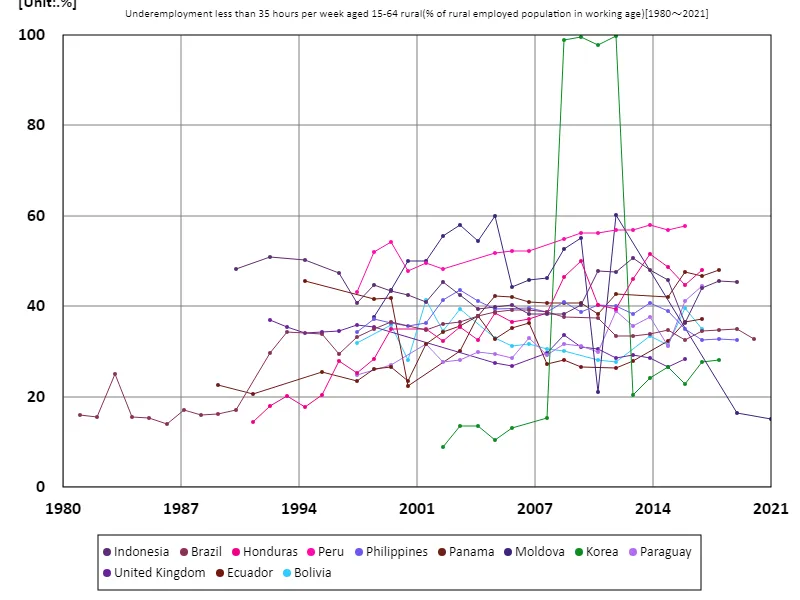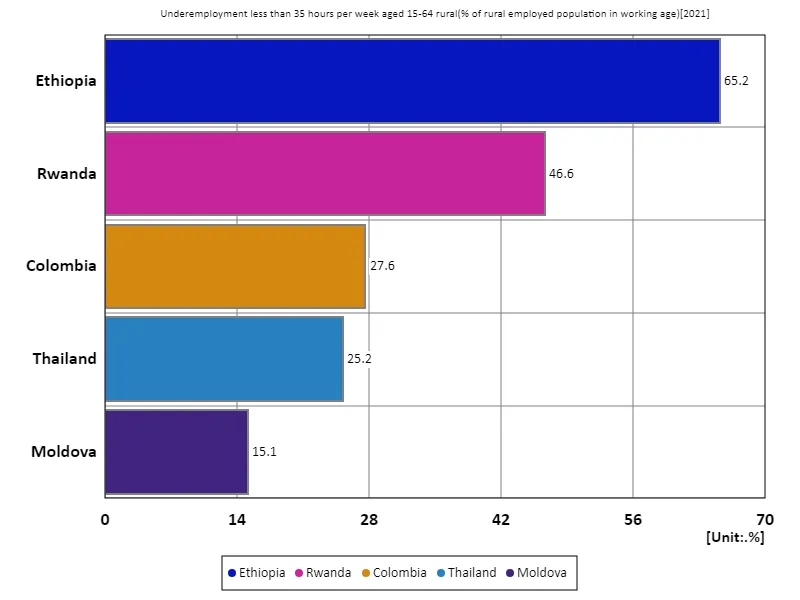Abstract
Data from 2021 shows that Peru has the highest employment rate among 15-64 year olds with primary school education or less, at 83.1%. This figure reflects high labour market participation despite low levels of education, especially in developing countries. In countries with high employment rates below primary school level, informal employment is common, with many people working in agriculture or the service sector. A trend observed so far has been that in countries with low levels of education, where employment opportunities are limited, many people flock to fields where there is a demand for labor. On the other hand, there is a shortage of educated labor, making it difficult to secure quality employment. Furthermore, as the economy continues to grow, there is a demand for improved educational standards and a shift to higher value-added jobs. Therefore, in the future, countries with high employment rates below primary school level will also need to invest in education and improve the quality of their labor markets. This will boost overall economic development and lead to sustainable growth.
Ages 15-64, underemployed less than 35 hours per week, rural areas (ratio of working-age rural employment population)
Between 1981 and 2021, underemployment (less than 35 hours) emerged as a prominent problem in many countries. South Korea in particular recorded a staggering underemployment rate of 99.6% in 2012, but this has fallen to 28.3% in 2021. This change reflects economic growth and improving employment policies. Overall, underemployment is declining in many countries as economies develop, but it remains a high problem in rural areas. Rural workers continue to struggle to escape underemployment and achieve economic security due to a lack of skills and job options. The challenge going forward will be to develop employment strategies that take into account the characteristics of each region and to promote education and skills development.


The maximum is 99.6%[2012] of Korea, and the current value is about 28.3%
Ages 15-64, underemployed (less than 35 hours per week), rural (ratio of working-age rural employment population) (Worldwide)
Between 1981 and 2021, underemployment of 15-64 year-olds working less than 35 hours per week remains a serious challenge, especially in rural areas. South Korea recorded an extreme underemployment rate of 99.6% in 2012, but subsequent policy and economic changes have helped it improve to 28.3% by 2021. This change suggests improved quality of employment and changes in economic structure. On the other hand, high underemployment rates persist in rural areas, leaving workers unable to find stable jobs. This is due to the fragility of the local economy and a lack of educational opportunities. Overall, there is a trend for underemployment rates to decline as the economy grows, but more specific measures and support are needed to overcome the unique challenges facing rural areas.


The maximum is 86.6%[2012] of Georgia, and the current value is about 96.6%
Ages 15-64, underemployed (
Based on 2021 data, underemployment of 15-64 year olds working less than 35 hours a week is a serious problem, especially in rural areas. Ethiopia has a high underemployment rate of 65.2%, reflecting the economic vulnerability of rural areas. The overall average is 36%, suggesting that rural labour markets in many countries are not functioning well. The total figure of 180% also indicates that the same worker may be engaged in multiple underemployment situations. Over the past few decades, rural workers have faced a shortage of skills and job opportunities, making it difficult for them to gain stable employment. The challenge going forward will be to improve the employment situation in rural areas by strengthening local economies and expanding educational opportunities.


The maximum is 65.2% of Ethiopia, the average is 36%, and the total is 180%



Comments